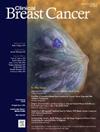Ultrasound Radiomics-Based Machine Learning and SHapley Additive exPlanations Method Predicting Pathological Prognostic Stage in Breast Cancer: A Bicentric and Validation Study
IF 2.5
3区 医学
Q2 ONCOLOGY
引用次数: 0
Abstract
Purpose
To build and validate ultrasound (US) radiomics-based machine learning (ML) models to predict the pathological prognostic stage of breast cancer (BCa).
Methods
We retrospectively included 578 BCa patients from two hospitals (468 and 110 in the training and test sets, respectively). For each patient, the pathological prognostic stage was determined. US radiomics features were extracted, preprocessed, and selected. Five US radiomics-based ML models were built to distinguish between pathological prognostic stage II-III and 0-I groups. The fusion model was built by combining the optimal radiomics model with clinical indicators. Receiver operating characteristic (ROC) curve analysis was applied to evaluate the performance of the models. SHapley Additive exPlanations (SHAP) method was used to interpret the models.
Results
For each lesion, 1333 US radiomics features were extracted and 11 features were finally selected to build models. The MLP model achieved optimal performance with the AUC of 0.893 and 0.806 in the training and test sets, respectively. The AUC of the fusion model was 0.913 and 0.823 in training and test sets, respectively. The squareroot_glszm_GrayLevelNonUniformity and wavelet-LHH_gldm_DependenceVariance were the most important features of the MLP model and fusion model, respectively.
Conclusions
US radiomics-based ML is helpful for preoperatively predicting the pathological prognostic stage of BCa, which has potential reference value for making individualized treatment strategies and predicting disease prognosis in clinical practice.
基于超声放射学的机器学习和SHapley加法解释方法预测乳腺癌病理预后分期:一项双中心验证研究。
目的:建立并验证基于超声(US)放射组学的机器学习(ML)模型预测乳腺癌(BCa)病理预后分期。方法:我们回顾性地纳入两家医院的578例BCa患者(训练组468例,测试组110例)。对每位患者进行病理预后分期。提取、预处理和选择美国放射组学特征。建立了5个基于美国放射学的ML模型来区分病理预后II-III期和0-I期组。将最佳放射组学模型与临床指标相结合,建立融合模型。采用受试者工作特征(ROC)曲线分析评价模型的性能。采用SHapley加性解释(SHAP)方法对模型进行解释。结果:每个病变提取1333个US放射组学特征,最终选择11个特征建立模型。MLP模型在训练集和测试集的AUC分别为0.893和0.806,达到了最优性能。融合模型在训练集和测试集的AUC分别为0.913和0.823。squareroot_glszm_GrayLevelNonUniformity和wavelet-LHH_gldm_DependenceVariance分别是MLP模型和融合模型最重要的特征。结论:基于US放射组学的ML有助于术前预测BCa的病理预后分期,对临床制定个体化治疗策略及预测疾病预后具有潜在的参考价值。
本文章由计算机程序翻译,如有差异,请以英文原文为准。
求助全文
约1分钟内获得全文
求助全文
来源期刊

Clinical breast cancer
医学-肿瘤学
CiteScore
5.40
自引率
3.20%
发文量
174
审稿时长
48 days
期刊介绍:
Clinical Breast Cancer is a peer-reviewed bimonthly journal that publishes original articles describing various aspects of clinical and translational research of breast cancer. Clinical Breast Cancer is devoted to articles on detection, diagnosis, prevention, and treatment of breast cancer. The main emphasis is on recent scientific developments in all areas related to breast cancer. Specific areas of interest include clinical research reports from various therapeutic modalities, cancer genetics, drug sensitivity and resistance, novel imaging, tumor genomics, biomarkers, and chemoprevention strategies.
 求助内容:
求助内容: 应助结果提醒方式:
应助结果提醒方式:


